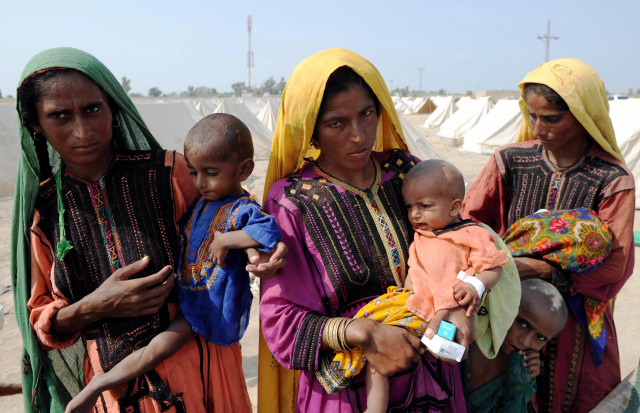60,000 flood victims hit by disease
The sources report that at the 30 medical camps set up in flood-hit areas.

The official estimate of the flood-stricken people suffering from the epidemics is over 60,000 out of a total of 1.1 million in eastern Balochistan.
The sources report that at the 30 medical camps set up in flood-hit areas, 30,000 patients of diarrhoea, 8,539 of malaria, 8,761 of skin diseases, 3,764 of asthma and sight-related diseases, and 2,979 of eye diseases had been examined. In addition, over 12,853 children suffering from diarrhoea and gastroenteritis were vaccinated in the five districts so far.
Meanwhile, UN agencies working in the stricken areas have warned that due to the increase of mosquitoes in standing floodwaters, malaria might break out on a large scale in Balochistan and also affect its adjoining provinces. The UN authorities fear the death of thousands of flood victims by malaria, if precautionary measures to check the disease are not launched on a war footing.
They also emphasised the need to drain standing floodwaters from Dera Allahyar, Suhbatpur, Gandakha, Usta Muhammad, Rojhan Jamali, Tambo and Jhal Magsi immediately in order to put a halt to the growth of mosquitoes.
APP district correspondents have reported that epidemics also broke out in Khuzdar, Mastung, Wadh, Karkh Zehri, Kharan and Awaran where flood victims of eastern Balochistan had taken refuge.
In Sibi, Dera Murad Jamali, Jhal Magsi, Kachhi Bolan and Quetta, hundreds of flood-hit people infected with gastroenteritis, skin diseases and snake-bite were being brought to hospitals plagued with shortages of doctors and medicines.
Hundreds of animal carcasses were floating in the standing floodwaters and the marooned people were forced to consume this contaminated water, putting themselves at risk of contracting deadly waterborne diseases.
Director General Agriculture Engineering Balochistan Mir Abdul Razzaque Baloch said the floods have done immense damage to the canal system and spurs, besides washing away standing crops on 700,000 acres of land in the green belt of the province.
Published in The Express Tribune, September 6th, 2010.



















COMMENTS
Comments are moderated and generally will be posted if they are on-topic and not abusive.
For more information, please see our Comments FAQ